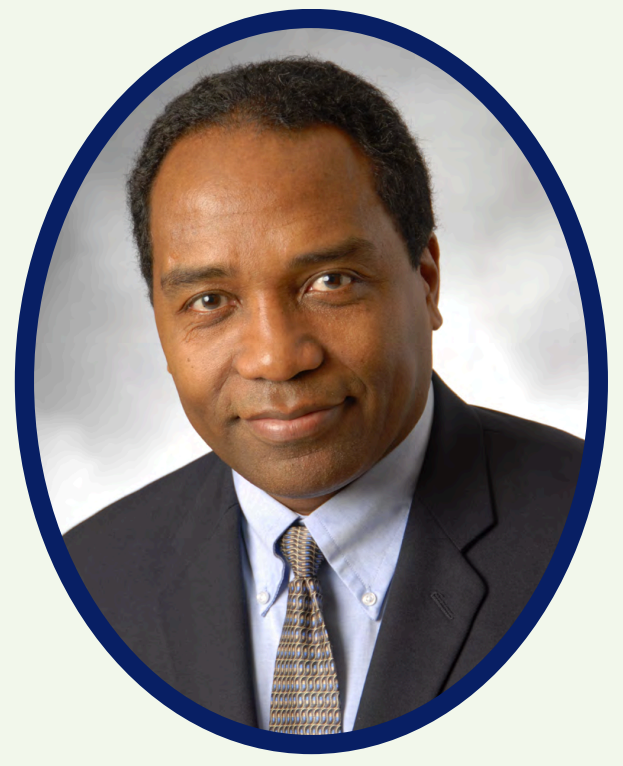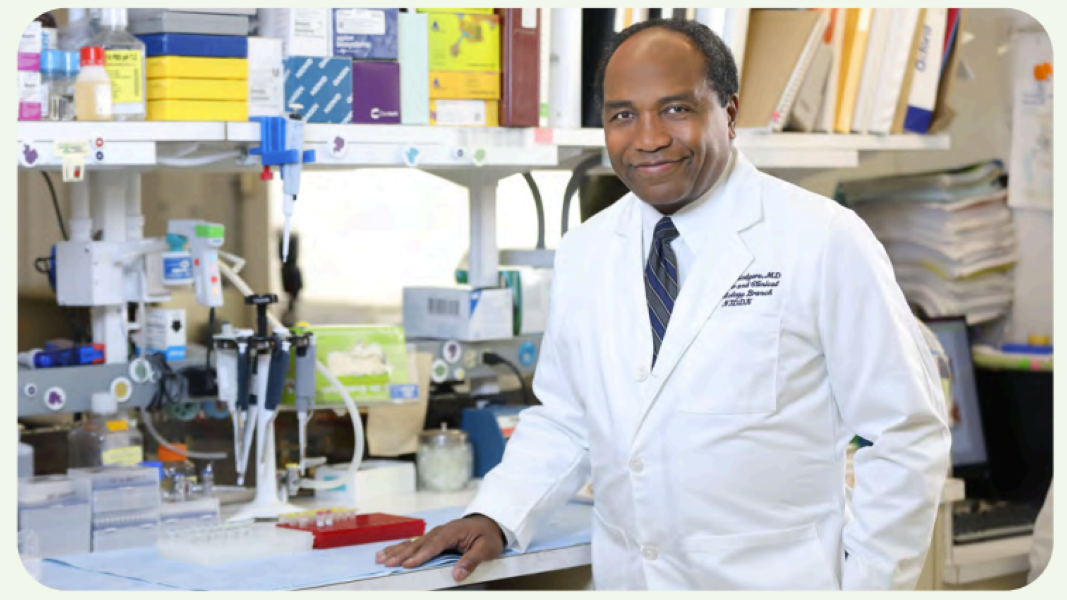Griffin P. Rodgers, MD, MBA, MACP
Physician
Physician, researcher, administrator, biology, health disparities, and health equity research
Griffin P. Rodgers, MD, MBA, MACP Heading link

The Department of Medicine Inclusion Council honors and celebrates the accomplishments of Griffin P. Rodgers, MD, MBA, MACP. Dr. Rodgers may be best known for his contributions to the development of the first effective therapy for sickle-cell anemia, hydroxyurea, which received FDA approval in 1998. He is also the Director of the National Institute of Diabetes and Digestive and Kidney Diseases (NIDDK).
Griffin P. Rodgers born and raised in New Orleans, Louisiana. His mother was a public health nurse, and his father was a high school science and public health teacher. His interest in medicine began at an early age accompanying his mother on the weekends when she went to people’s homes who couldn’t get into the clinics during the regular week to receive their vaccinations and other medicine. Dr. Rogers recalled “Seeing her give quality and compassionate care to all instilled in me a spirit of service to others, particularly to those who are medically underserved. These were often very poor, impoverished neighborhoods, often housing projects; the health disparities were very prevalent in New Orleans. One could clearly see the role that poverty had in really making these common chronic diseases more prevalent and much more serious”.
During high school in the 70s, he had three close friends who had sickle cell disease. At that time, little could be done for this condition. “One of these friends died when I was still in high school, and two others died while I was attending college. Watching them suffer and die probably did instill in me a desire to learn more about the disease and ultimately led to my decision to go into the field of hematology and carry out biomedical research in sickle cell disease,” noted Rodgers. He attended Brown University and was accepted into their advanced medical program from high school. Dr. Rodgers went on to earn his undergraduate, graduate, and MD from Brown and has an MBA from Johns Hopkins University. He completed his residency and chief residency in internal medicine at Barnes Hospital and the Washington University School of Medicine in St. Louis, where his mentors suggested he come to NIH.
Griffin P. Rodgers, MD, MBA, MACP Heading link

Rodgers came to the National Institutes of Health (NIH) in 1984, where he quickly began his research on sickle cell disease. As he made his mark in the laboratory and the clinical setting, Rodgers also progressed through the managerial ranks, heading NIDDK’s Molecular and Clinical Hematology Branch starting in 1998, becoming deputy director of NIDDK in 2001 and director of the institute in 2007.
Dr. Rodgers and his collaborators reported on a modified blood stem-cell transplant regimen that is highly effective in reversing sickle cell disease with relatively low toxicity, now in more than 60 adults. These results were replicated in adults with sickle cell anemia who were being treated at the University of Illinois Chicago, in a 2015 study with UI Health.
Gail Wyatt, PhD Heading link

Dr. Rodgers has been an invited professor at medical schools and hospitals both nationally and internationally. He has been honored with many named lectureships at American medical centers and has published more than 250 original research articles, reviews, and book chapters; has edited four books and monographs; and holds three patents. He served as Governor to the American College of Physicians and as Chair of the Hematology Subspecialty Board and a member of the American Board of Internal Medicine Board of Directors.
When thinking about training future leaders in research, Dr. Rodgers said “one must continue to learn and be in the position to take full advantage of the next technologies. We want to solve problems that we’re not yet aware of. It’s even more important now to continue being a lifelong learner.”